Does Racing Improve Consumer Snowmobiles?
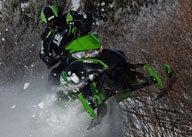
Lessons learned from racing will improve what we get to ride
The axiom that “racing improves the breed” may actually turn out to be true as we head into model year 2016 and beyond. Snocross definitely brought greater performance and durability as manufacturers like Polaris and Ski-Doo managed to cut weight from crankshafts to get engines to ramp up more quickly for improved holeshots. Ski-Doo’s new-for-2015 RAS2 front suspension upgrade bears a racing heritage. Arctic Cat even refers to its tall spindle front suspension as the Arctic Race Suspension (ARS). So, yes, racing does improve the breed.
Looking at what the sled makers announced as competition models this season, we see indications that future sleds will get even better as the years roll along. We figure that some, not all, of those performance gains will make their way into full production sleds in a few seasons. Don’t look for gigantic changes to come next season, but expect to see some lessons from racing trickle down to our trail and deep powder models.
Years ago you could almost look at a race sled and anticipate a new hot rod the coming year. Ski-Doo was uncommonly adept at this as it would build a “racer” off a stock specification and bring it out the next year as a new model.
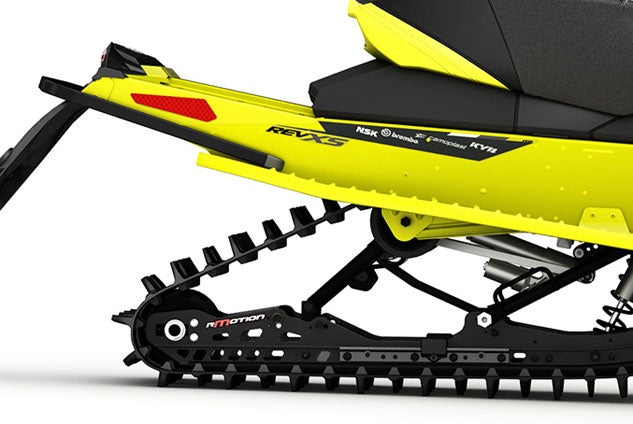 Ski-Doo’s race team tests various suspension designs like rMotion and RAS2 that filter down to the production models.
Ski-Doo’s race team tests various suspension designs like rMotion and RAS2 that filter down to the production models.The 1969 Olympique 320 SS comes to mind. The stock Olympique 320 came with an actual 320cc single cylinder Rotax, but the 320 SS version was powered by a 335cc Rotax single, complete with a Tillotson HD carburetor and 26 horsepower. It was intended to run in the 340cc stock classes of the day. The following year, the 320 SS became a full-fledged TNT and ran the same 335cc engine. Even back then, racing kind of improved the breed.
2015 Ski-Doo MXZx 600RS Race Sled Unveiled
We see the return of the Winnipeg-to-St Paul type of long distance point to point cross country events having a positive effect on future sleds. The idea is to utilize stock-based sleds, which means that Polaris will showcase its new AXYS chassis models instead of its snocross racers. Arctic Cat already made an upgrade by creating a cross country racing “XC” version of its 2015 ZR 6000 RR. Ski-Doo will compete and Yamaha most likely will bring a Cat-based Viper of some description.
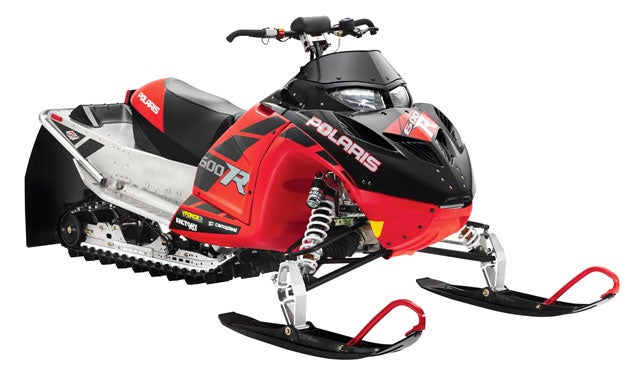 Polaris’ pugnacious 600cc snocross racer tested features like the lightweight crankshaft; high/low compression adjustable shocks, carbon fiber overstructure and rider balanced positioning.
Polaris’ pugnacious 600cc snocross racer tested features like the lightweight crankshaft; high/low compression adjustable shocks, carbon fiber overstructure and rider balanced positioning.If you look at Polaris alone and what its racing department has contributed to its production line up, you might be amazed. Polaris notes that it “…has historically developed high-performance technology on race sleds, then implemented versions of these components and designs on consumer sleds. Such features include legendary Polaris IFS, the lightweight crankshaft, high/low compression adjustable shocks, carbon fiber overstructure, rider balanced positioning, and more.”
Working with its exclusive shock partner, Walker Evans, Polaris Racing Manager Tom Rager, Jr. explains how that relationship has worked to develop a new race sled around Walker Evans technology.
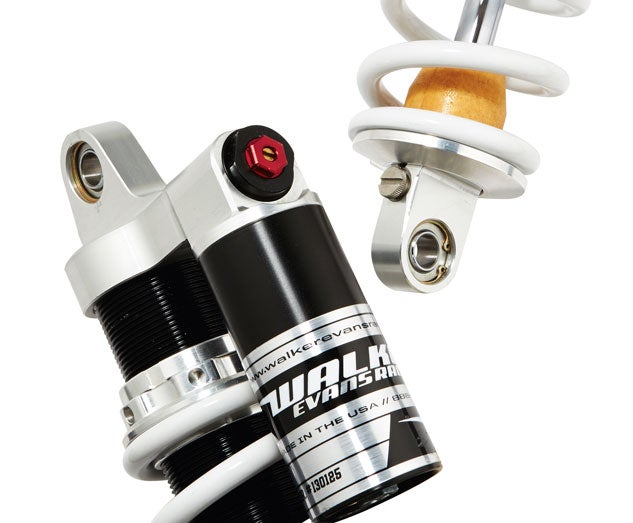 Walker Evans and Polaris worked closely to develop new high-low rebound-adjustable shocks that keeps the clickers separate so they don’t affect each other when you make adjustments to one of them.
Walker Evans and Polaris worked closely to develop new high-low rebound-adjustable shocks that keeps the clickers separate so they don’t affect each other when you make adjustments to one of them.“Our shocks in recent seasons have been really good, but we spent the better part of two years developing this new sled in conjunction with Walker Evans Racing,” said Rager. “The big benefit is adjustability. These are high-low rebound-adjustable shocks that have a different kind of rebound than most shocks, and the design keeps the clickers separate from each other so they don’t affect each other when you make adjustments to one of them.”
When you look at top of the line Polaris snowmobiles you see Walker Evans shocks front and rear. The race sleds prove that product so it can be added to trail models. You’ll also note that Polaris snocross sleds utilize a chassis more like what you’d find in the Indy series and you can expect that suspension designs have evolved to improve that “value” line up. On the AXYS models, the rider-balanced concept springs directly from the race track, even if the snocross race suspension differs from the Pro-XC unit used on the 600 Rush Pro-S, which is expected to be the sled of choice for Polaris long distance terrain riders.
2015 Arctic Cat ZR 6000 R XC and R SX Race Sleds Unveiled
The Arctic Cat engineered and built 600cc two-stroke direct-injected twin will power Cat’s entry in the point-to-point races. Based on the RR (Race Replica), Cat’s all-new 2015 ZR 6000 R XC terrain sled comes with upgrades designed for long haul durability. Both the RR and new XC model are based on the Procross chassis, but the XC features some serious bulking up to help it withstand the constant pounding occasioned in a full throttle point-to-point event. Added features for the XC include:
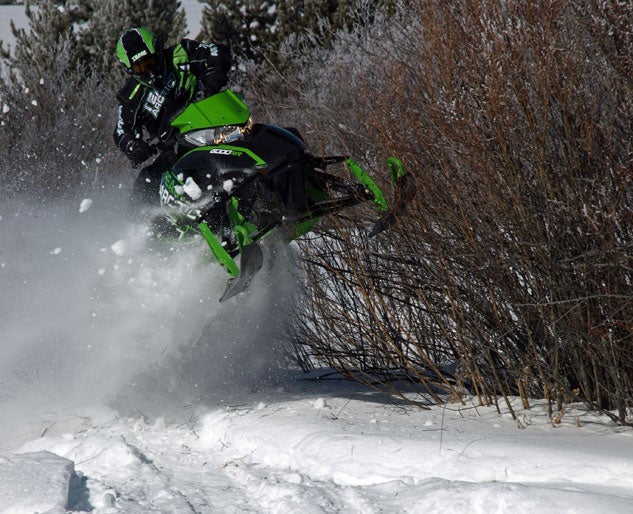 Arctic Cat uses racing to improve the litter as the ZR 6000 RR draws its heritage from snocross, with the new-for-2015 ZR 6000 R XC basing its cross-country prowess on an upgraded version of it.
Arctic Cat uses racing to improve the litter as the ZR 6000 RR draws its heritage from snocross, with the new-for-2015 ZR 6000 R XC basing its cross-country prowess on an upgraded version of it. • Additional tunnel brace added around lower chaincase for increased strength; • New outer rear suspension brackets for increased strength; Use of 10mm mounting for increased strength at the front bulkhead, front spars, and rear spars (The RR and all other Procross chassis use 8mm fasteners.); • Wider 43.5-inch ski stance versus the RR’s 42-inch ski stance; • A “race style” spindle and ski damper to add pressure to the rear of the ski for improved cornering and handling; • Larger diameter tie rods (same as 2014 ZR 6000 R race models) for increased strength; • Five-inch Trail Ski to meet a required 48-inch overall vehicle width; • Float Evol RC ski shocks with hand adjustable compression and rebound; • The XC race valve specification is designed to be stiffer than the current RR package; • Same brake caliper as 2014 ZR 6000 XC racer and competition brake pad material with increased braking power at elevated brake temperatures for improved wear and increased stopping power; • Additional high-grip fabric on seat cover; • Revised rear suspension geometry with two-inch longer front torque arm for Improved handling; • New clutch guard design with pipe mount and addition of spare belt mounting that’s not available on RR models; • Change from 129-inch Ripsaw to a Cobra track pattern track.
2015 Polaris IQ Race Sled Unveiled
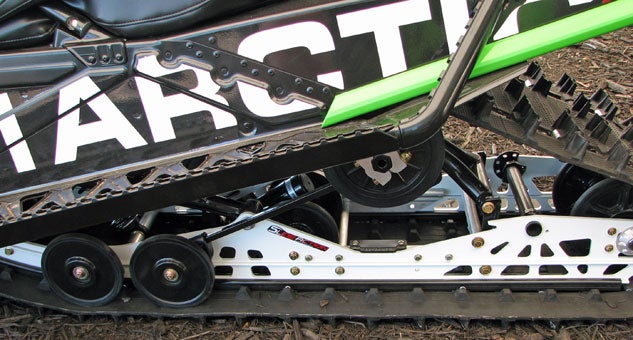 Expect to see improvements borne from racing as the ZR 6000 R XC Slide Action “race” suspension features revised rear suspension geometry with two-inch longer front torque arm for improved handling.
Expect to see improvements borne from racing as the ZR 6000 R XC Slide Action “race” suspension features revised rear suspension geometry with two-inch longer front torque arm for improved handling.Obviously not all of these features will transfer from Cat’s racing cross country models to next year’s performance trail sleds, but you should anticipate seeing improvements based on what Cat engineering finds works well and can be readily mixed into future full-scale production manufacturing. And, since Arctic Cat is building Yamaha’s Viper series, we would think that future Vipers will benefit as well.
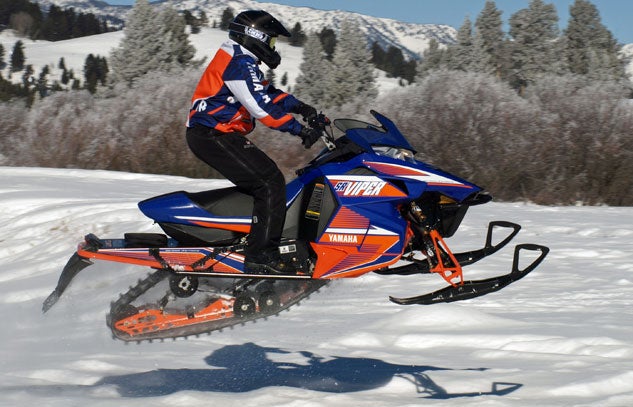 We expect that Yamaha will field four-stroke Viper-branded versions of Arctic Cat’s “XC” terrain racers to contest the tough point-to-point terrain races.
We expect that Yamaha will field four-stroke Viper-branded versions of Arctic Cat’s “XC” terrain racers to contest the tough point-to-point terrain races.Last season Ski-Doo made big changes to its racer, so Ski-Doo didn’t announce any huge changes in its 2015 MXZx 600RS snocrosser. The past season saw a new front suspension, some of which translated to the 2015 trail sleds for improved steering, plus improved handling and cornering. For the upcoming season the racing department worked to improve calibration changes in the Rotax race motor and also developed a new track pattern to facilitate acceleration. What has been learned in these areas has direct application for everyday performance trail sleds.
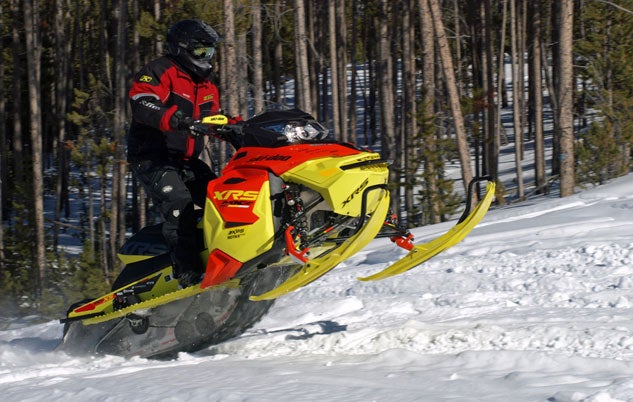 Ski-Doo’s MXZ XRS is the brand’s top of the line high performance trail sled, which is essentially a consumer version of last season’s race sled.
Ski-Doo’s MXZ XRS is the brand’s top of the line high performance trail sled, which is essentially a consumer version of last season’s race sled.Regardless of which sled brand wins the most trophies, we all win. Learning where to get weight off the sleds, how to gain a holeshot advantage from a track pattern, and doing things that add strength to chassis and suspension components is all good for the long haul. They race. The breed improves. And we win, eventually.



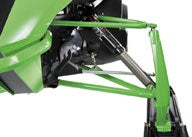
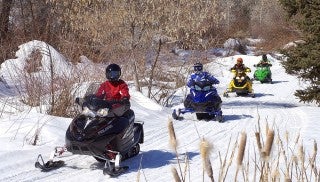
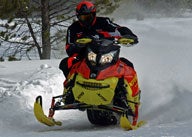


 Your Privacy Choices
Your Privacy Choices